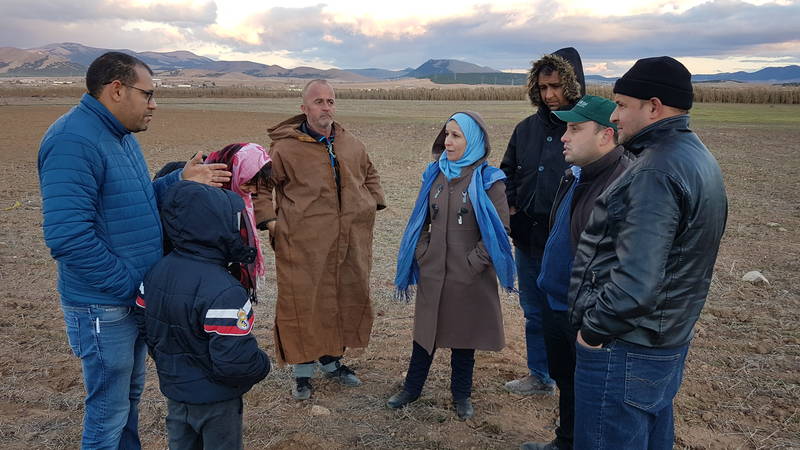Locally-made seeders are critical enablers of conservation agriculture

The availability and use of direct seeders are key for the successful introduction and scaling of conservation agriculture (CA). In the past, several CA projects were unable to go to scale partly because of the use of imported direct seeders. Their high costs, which range from US$ 30,000 to 40,000, tended to discourage many farmers. In addition, spare parts were not locally available, and the technical knowledge needed to ensure on-going maintenance and repair was absent.
To overcome these challenges, partners involved in a project in Tunisia and Algeria - ‘Use of Conservation Agriculture in
Crop–Livestock Systems in the Drylands (CLCA-2)’ - have developed prototypes of locally-manufactured direct seeders. Tunisian partner, Institut National Des Grandes Cultures (INGC), in collaboration with local manufacturer, Société de Production Métallique du Sud (SPMSud), developed a local seeder with a width of 2.3 meters (m) which has the capacity to sow 10 rows and approximately 10 hectares (ha) per day. Different sized sieves allow the sowing of cereals, as well as larger legume seeds, like Faba bean.
It has different compartments for the application of seeds and mineral fertilizer at the same time. Nevertheless, when evaluating the seeder with farmers, several points were raised, suggesting how the seeders could be improved. Some of the most crucial remarks were the small width of the seeder, the seeding rate adjustment mechanism, and the need for expensive imported tines. Before going to scale with the manufacturing of the local seeder, technical improvements of the prototype are needed before it is accepted by farmers.
Algerian partner, Institut Technique des Grands Cultures (ITGC), is more advanced in the development of local direct seeders, and with state-owned company, ‘Entreprise Nationale de Production de Matériels Agricoles Trading (PMAT), oversaw the manufacture of a prototype known as ‘Boudour,’ which has been used to install CA demonstration plots. Some 20 prototypes are now ready to be sold. This seeder has a width of 2.5 meters and can sow 14 rows. Special regulation mechanisms allow an even distribution of seeds and a proper adjustment of the seeding rate and depth of seed placement. The major concerns in Algeria are similar to those in Tunisia, including the small width of the seeder, a lack of farmer demand, and the need to use imported tines since the production of tines requires costly molds.
South-south knowledge exchange
A south – south exchange visit was also organized in January 2019 in Algeria, facilitating an exchange between Tunisian and
Algerian actors involved in the development and production of locally-produced direct seeders. Both sides agreed to collaborate in the development of locally-manufactured tines to increase the integration rate and reduce seeder production costs.
While Algeria is more advanced in the manufacture of the seeders, Tunisia has more experience scaling the conservation agriculture package in general. The total area under CA in Tunisia is far larger than in Algeria, and the south – south exchange allowed the Algerian partners to learn about the Tunisian scaling strategy. An important aspect of this strategy is the identification of, and collaboration with, CA lead farmers who coach nearby farmers in the proper use of CA packages.
Partners in both countries intend to continue working together to produce locally-manufactured tines, which they hope will encourage the production of local direct seeders and the adoption of CA packages over the long term. Cheaper and better-adapted direct seeders will make CA packages more attractive to farmers. The CLCA-2 project will continue supporting the development of improved tines and direct seeders and facilitate the demonstration of these technologies to farmers.
Background
The CLCA 2 initiative, now in its second phase (April 2018 - June 2022), is designed to combine an adaptive research program, including integrated capacity development, with the active development of a delivery mechanism for CLCA systems to serve as impact accelerators in both North Africa and Latin America. The project is funded by the International Fund for Agricultural Development (IFAD) and implemented by ICARDA and the International Maize and Wheat Improvement Center (CIMMYT).
